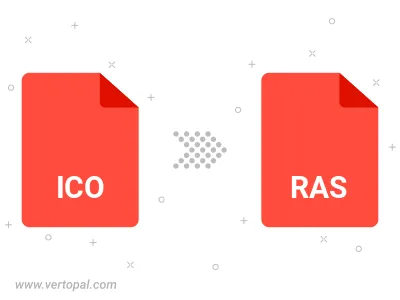Convert ICO to RAS
Convert ICO images to RAS format, edit and optimize images online and free.

The ICO file extension, standing for "Icon", is integral to Microsoft Windows for storing icons of different sizes and color depths. Its primary use is to display graphical representations of executable programs, files, and folders within the Windows operating system. The ICO format's origins trace back to the early versions of Windows, evolving over the decades to support enhanced resolutions and alpha transparency. Today, ICO files ensure visually consistent and scalable icons that maintain their appearance across various display settings, aligning with modern user interface standards.
The Sun Raster file extension, also known as RAS, is a bitmap graphics file format developed by Sun Microsystems for use on their SunOS operating system. It supports black-and-white, grayscale, and color images with various pixel depths and includes simple Run-Length Encoding (RLE) compression. The format was widely used in UNIX-based systems and is supported by many imaging applications. The RAS format has largely been superseded by more modern formats but remains relevant for legacy systems and specific use cases.
Choose the ICO image you wish to convert.
Choose any ICO to RAS converter tools for a customized conversion, and click Convert.
Let the conversion process finish, then download your RAS image.

To change ICO format to RAS, upload your ICO file to proceed to the preview page. Use any available tools if you want to edit and manipulate your ICO file. Click on the convert button and wait for the convert to complete. Download the converted RAS file afterward.
Follow steps below if you have installed Vertopal CLI on your macOS system.
cd to ICO file location or include path to your input file.Follow steps below if you have installed Vertopal CLI on your Windows system.
cd to ICO file location or include path to your input file.Follow steps below if you have installed Vertopal CLI on your Linux system.
cd to ICO file location or include path to your input file.